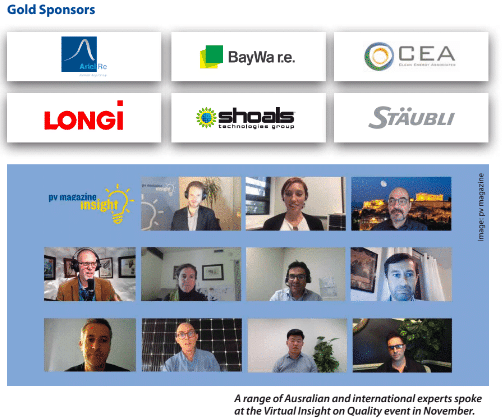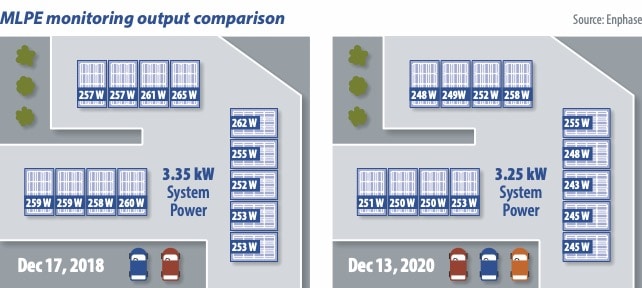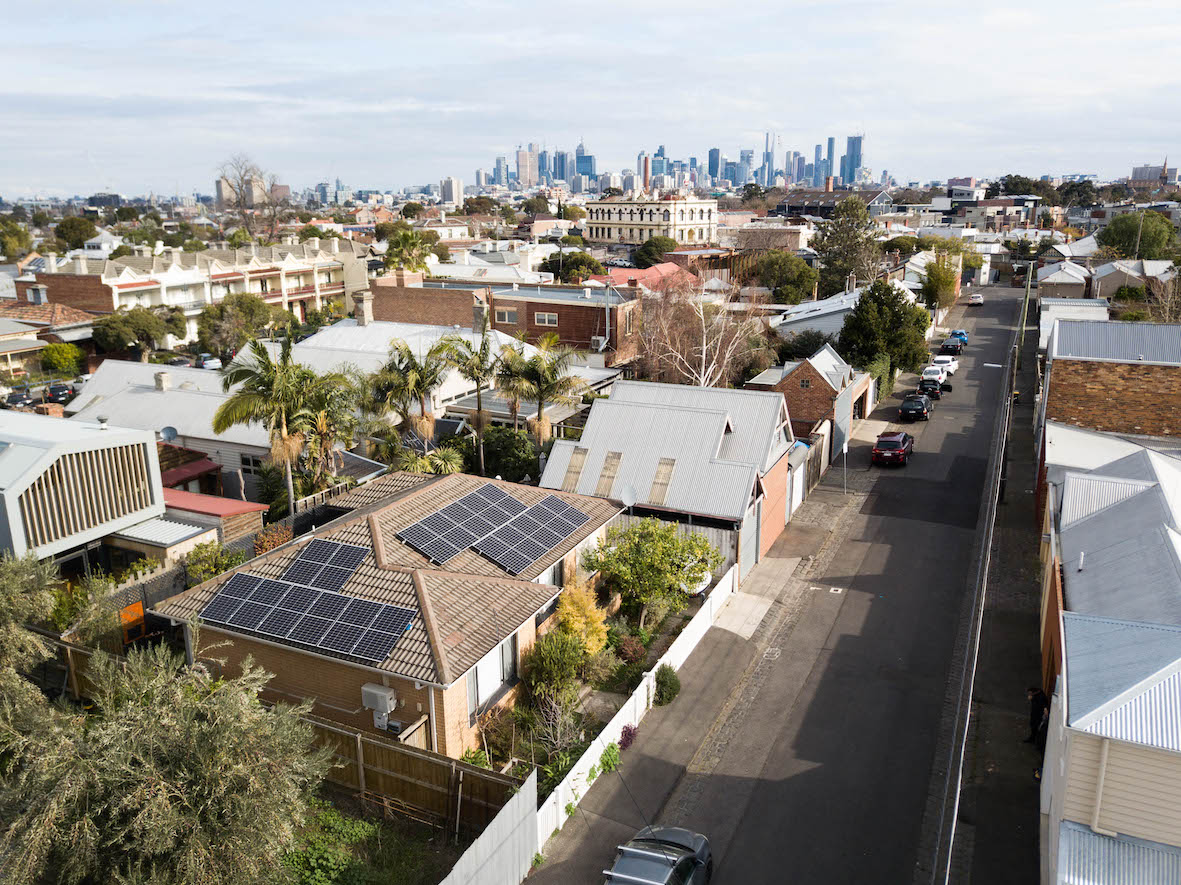The Australian rooftop solar market segment is set to deliver something approaching 3 GW of installations in 2020 – despite the Covid-19 pandemic and lockdowns. It is a solar marketplace that is notorious for being highly competitive and, in the worst-case scenarios, having race-to-the-bottom pricing.
On the other hand, module suppliers have been increasing their warranties in Australia in recent years, with manufacturer warranties extending out beyond 10 years and premium brands making 25 years the norm for the high-end slice of the market. Performance warranties also offer installers and end consumers confidence that degradation will not impact power output over a module’s 25 to 30-year lifetime.
However, while that may seem all good on paper, in reality, small-scale solar retailers or installers can find it difficult, if not impossible, to claim against performance warranties. And if they make long-term commitments to their customers, they could be left carrying the liability to the end consumer.
“Under Australian consumer law, if I’m a homeowner, my claim is on the [solar] retailer or the importer,” explained John Grimes, the chief executive of the Smart Energy Council (SEC). “Basically, that is where the liability lies.”
The issue of warranties, their value, and pitfalls was addressed at pv magazine’s Virtual Insight on Quality session held on Nov. 5, as part of the official All-Energy Australia virtual conference program. One of the takeaways delivered by the international industry experts and Australian solar insiders was that warranties should be treated with a modicum of caution and that claiming against them can be anything but straightforward.
“Long warranties make excellent marketing but that’s actually carrying a long burden for small retailers, for example, that are tied to that product,” said Insight panelist Geoff Bragg, the managing director of Sunman Solar and an SEC board member, echoing Grimes’ remarks. Bragg described the situation as representing an “onerous commitment” for solar retailers and installers – many of which are small businesses.
Warranty claims
There is little that is simple when claiming against warranties – a situation that appears particularly true for small enterprises, further complicating matters. George Touloupas is the director of technology for Clean Energy Associates. He addressed the challenge of making warranty claims against solar module degradation and the related array underperformance.
Touloupas noted that degradation –whether it is caused by PID, LID, or the newer form, LeTID – is generally not considered covered by manufacturer warranties, but rather by performance warranties. Typical performance warranties “are all described as industry-leading,” and are generally 2.5% degradation in the first year, and then between 0.7% and 0.4% each year after that.

For a successful claim to be made, Touloupas says, degradation from modules’ nominal power plus measurement uncertainty, or tolerance, must be demonstrated. If this tolerance is assumed to be 4%, demonstrable degradation must be severe. Testing to prove this degradation “is very difficult and expensive … [and] the buyer takes over the costs.” All is not lost, for prospective warranty claimants, however, and the CEA engineer set out a case in which LeTID could be demonstrated and a warranty claim made. CEA had acted on behalf of an owner of several PV plants and, after eliminating that LID and PID were the culprits, through factory audits and testing, could demonstrate that LeTID was present. This was by virtue of electroluminescent (EL) imaging that showed the “telltale” LeTID checkered cell pattern on the module.
“Even for very difficult degradation causes, there are ways to go around, do the diagnostics and get the warranty claim,” said Touloupas.
Testing in focus
The role of testing in making warranty claims and assuring quality is an important one, said Michelle McCann from PV Lab Australia. The Canberra-based testing lab is currently expanding its operations, partly thanks to a AUD 220,000 ($160,000) territory government grant, and is now in the process of applying for international certification to Standard ISO/IEC 17025.
Quality performance, by the numbers

pv magazine’s quality-focused global events have long been based on real-world case studies. To kick off the Virtual Insight on Quality event last month, we presented some public monitoring and microinverter data. The numbers showed what appears to be system underperformance and potentially LeTID. The chart below illustrates the power output from a residential system that appears to have sharply declined over a three-year period. The illustration to the right draws on real-world data from 280-290 Wp PERC modules, which appear to have degraded. The role of thermography and electroluminescent (EL) imaging in identifying and demonstrating module issues was also presented before the local and international solar experts joined the discussion.

McCann said that the laboratory had seen “degradation in the field after just a couple years,” and advocates for the strategy of keeping a sample of modules to the side for testing at a later date. “They’re great to have as a backup and can resolve some issues,” said McCann.
The UNSW – a world-leading research centre into LeTID, alongside its other PV research areas – is also currently expanding its testing capability. At the Insight event, Alison Ciesla, the project lead for industry collaboration at UNSW, reported that the university has ordered advanced test equipment from Holland’s Eternal Sun. The gear will allow it to look into LeTID in more detail. “We hope to be able to help the industry test their modules,” said Ciesla.
The UNSW researcher provided an update on the latest investigations into the degradation phenomena, reporting that LeTID degradation can result in more than 10% power loss. However, that it is highly variable among manufacturers. She said that LeTID is likely to occur much more quickly, over five to six years in subtropical climates, for example, before cells and modules recover. But in temperate climates, cells may slowly degrade and simply never recover.
The good news, Ciesla said, is that simple steps can be taken in manufacturing to prevent LeTID. UNSW has worked for several years with a range of cell makers in its work on degradation.
Wholesaler role
A potential role for insurance, manufacturer efforts to mitigate degradation, and the role of electric balance-of-system components in faults and rooftop fires were all discussed across the two-hour event. The perspective of wholesalers and distributors – the “meat in the sandwich,” as described by Baywa r.e. Solar Systems Managing Director Durmus Yildiz – was also provided. Yildiz described how wholesaler quality assurance programs, as well as the negotiating power that they can offer to solar installation companies, can help to avoid or bring resolution to warranty claims.
Yildiz, a 20-year veteran of the Australian solar industry, also reminded attendees that installation quality remains of crucial importance. “There are still very bad [installation] practices here,” said Yildiz, noting that this is particularly true when solar PV installation crews are operating under tight schedules to remain profitable. He said that often the component, module, cabling, and inverters were not to blame. “There are a lot of examples of the wrong use of a well-manufactured product.”
DC cabling and eBOS
This content is protected by copyright and may not be reused. If you want to cooperate with us and would like to reuse some of our content, please contact: editors@pv-magazine.com.









By submitting this form you agree to pv magazine using your data for the purposes of publishing your comment.
Your personal data will only be disclosed or otherwise transmitted to third parties for the purposes of spam filtering or if this is necessary for technical maintenance of the website. Any other transfer to third parties will not take place unless this is justified on the basis of applicable data protection regulations or if pv magazine is legally obliged to do so.
You may revoke this consent at any time with effect for the future, in which case your personal data will be deleted immediately. Otherwise, your data will be deleted if pv magazine has processed your request or the purpose of data storage is fulfilled.
Further information on data privacy can be found in our Data Protection Policy.